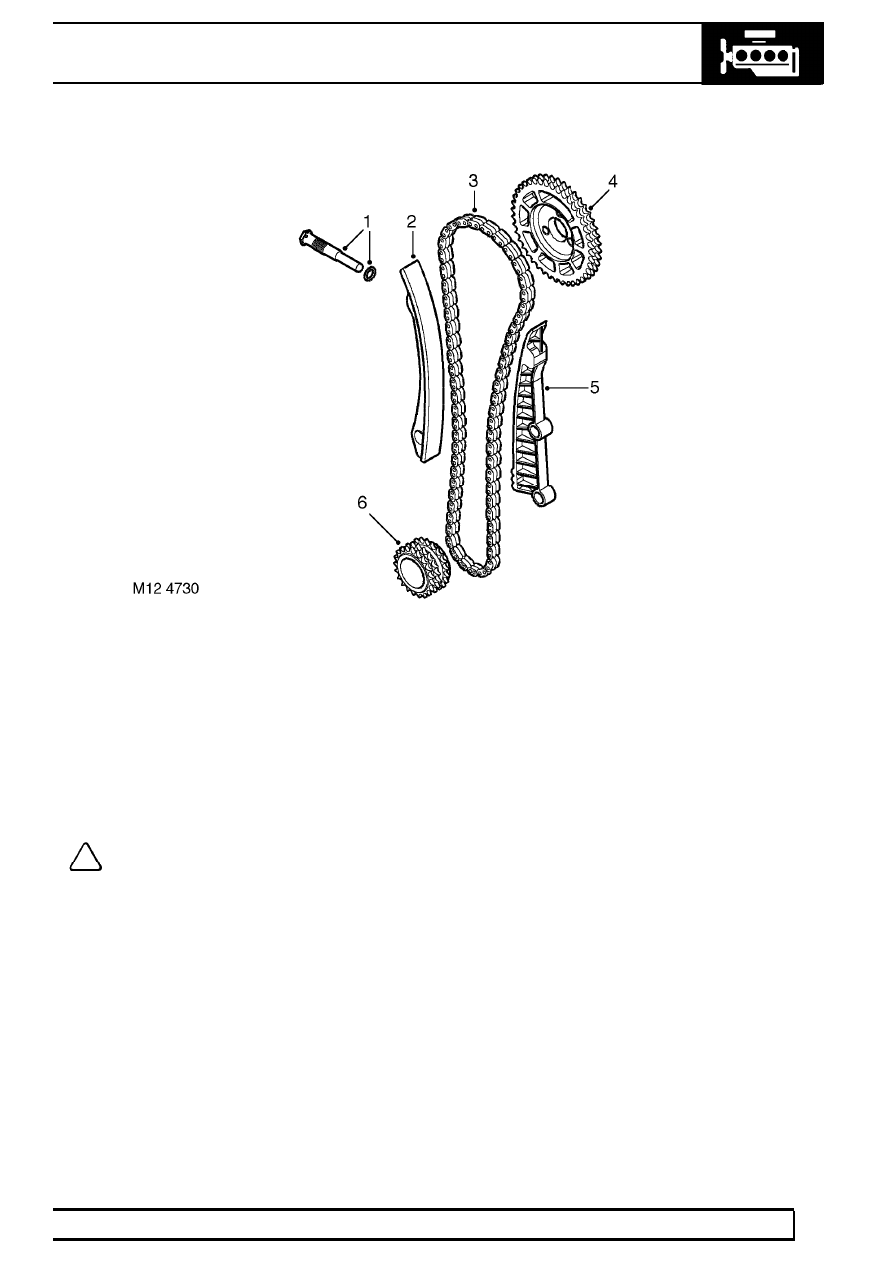Defender (1999-2002). Manual - part 25

ENGINE
29
DESCRIPTION AND OPERATION
Timing chain guides
1. Hydraulic tensioner
2. Adjustable tensioner arm
3. Duplex timing chain
4. Camshaft sprocket
5. Fixed tensioner arm
6. Crankshaft sprocket
The crankshaft sprocket to camshaft sprocket timing chain is held taut by a tensioner arm acting on the slack side
of the chain. The tensioner is automatically adjusted by means of an hydraulically operated tensioner adjuster.
The drive side of the chain has a plastic guide attached to the front face of the cylinder block. The fixed guide is
attached to the front of the engine block by two bolts. The tensioner arm is fixed to the front of the cylinder block
by a single pivot bolt which allows the tensioner arm to pivot about its axis.
NOTE: The adjustable tensioner arm is not interchangeable between pre-EU3 and EU3 vehicles
due to a change in geometry on the EU3 version.